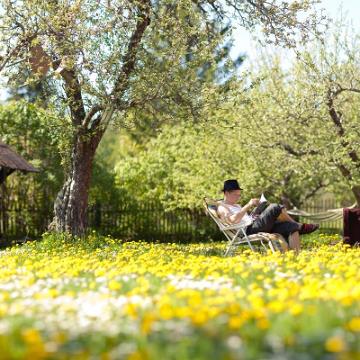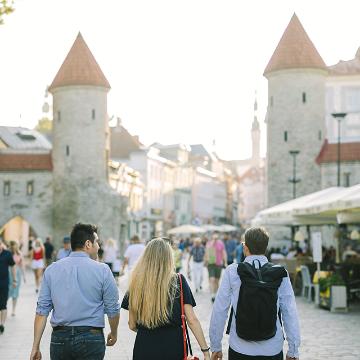25.04.2023
Estonia’s second largest city, Tartu, will be the European Capital of Culture in 2024. Situated in the southeast of the country, it is a two-hour train ride from Tallinn.
The theme of Tartu 2024 is “Arts of Survival” which expresses the power of the arts in affecting Europe’s future in three areas of life: environmentally friendly culture with a focus on real human communication, strong communities and essential skills for living and, indeed, survival in the coming years.
Here are five reasons to visit Tartu this year ahead of the celebrations.
The most tilted building in Europe
The city is home to one of the most tilted buildings in Europe, the Tartu Leaning House, which leans at a greater angle than the Leaning Tower of Pisa. Now part of the Tartu Art Museum, visitors can explore rest of the art museum, which houses a diverse collection of post 18th-century Estonian and international works.
A city for learning
Tartu is home to several of northern Europe’s oldest universities. With a large student community spanning across 11 higher education institutes, the city has a bohemian vibe, and is a hotbed for creative and scientific culture. The city also sports a range of exciting museums, the largest of which is the century-old Estonian National Museum where history is intertwined with innovation. The museum’s permanent exhibitions of the cultural history of Estonian and Finno-Ugric nations are represented through both physical exhibits as well as novel smart solutions, creating a bond between the older and younger generations.
A green city
Tartu received the Green Destinations Silver Award in 2021 after an international assessment of the city. In addition, Tartu has been selected among the TOP 100 Sustainable Destinations two years in a row.
As part of Tartu 2024 Cultural Capital, the city is demonstrating creative ways to incorporate sustainability in cultural activities. The ReVogue Fashion Festival invites sustainable designers, producers, and consumers to share campaigns, methodologies and events which focus on promoting and raising awareness of fashion reuse and the aftermarket. Alongside the events, there will be educational, hands-on lecturers and meetings with sustainable manufacturers and suppliers for those keen to learn how to create their own clothes.
Unique wooden neighbourhoods
The expressive neighbourhoods of Karlova and Supilinn, known as “Soup Town”, create a small wooden city within a city, complete with old wood houses and an eccentric atmosphere. In spring, locals, visitors, and architectural enthusiasts have the opportunity to take part in a plethora of festivals, such as Karlova Neighbourhood Festival, that add an extra dimension to areas with an already unique architecture and vibe in the form of exciting events.
A city full of history
Tartu began as a city in 1224, when the Bishop of Lihula decided to build his own cathedral in Tartu. This makes Tartu as we know it the oldest city in the Baltics. Visitors can explore the history of Tartu and Estonia over the next year through the Inwards Festival, a series of ambient music concerts with electronic music, psycho-geographical theatre, visuals, and light shows. The festival aims to tell the story of Estonian history and traditions in an engaging and playful way.
High-res images can be downloaded here














